The US secretary of transportation, Sean Duffy, is hitting the road – and he wants you to ride shotgun. The cabinet official recently struck out from the capital in the direction of his native Wisconsin to promote the Great American Road Trip. It’s an initiative that seeks to honour the country’s 250th birthday, which takes place next year, and helpfully coincides with falling petrol prices that the administration credits to president Donald Trump’s “drill baby, drill” fossil-fuel agenda. Duffy wants more US residents to hit the road. But is the nation’s mobility mogul on the right track?
The road trip is a time-honoured summer tradition in the US and the catalyst of many great literary works, including Jack Kerouac’s On the Road and Jonathan Raban’s Driving Home (my current nightstand reading). Duffy, a former reality-TV star, is perhaps more starry-eyed than most about windshield time. He met his wife while trapped in a motorhome on MTV’s Road Rules in 1998. With nine children, the family is naturally more inclined to opt for road trips due to the sheer economy of scale.

Yet the travel plans of the American public are changing. The US’s national rail carrier, Amtrak, facilitated a record 32.8 million trips in 2024 and its long-distance routes saw an 8 per cent year-on-year increase. After decades in the doldrums, Amtrak is on the cusp of an impressive comeback. New routes, such as the Floridian (Chicago-Miami), recently debuted, while the Mardi Gras Service (New Orleans-Mobile) will begin in August. Its sleek Siemens-designed and made-in-California Airo train is also on track for launch next year.
While Amtrak’s rail network is a far cry from those found in Europe or Japan, its cross-country routes offer breathtaking scope and scenery, as well as a masterclass in clever branding. Traveling from Chicago to Los Angeles via the Texas Eagle and Sunset Limited is roughly three times the length of Europe’s longest train ride. While 65-hour rail journeys are not for everyone, they provide a far more relaxing and picturesque way to experience the US than the monotonous tarmac of the interstate highway system.
In a bid to rouse the road-trippers, Duffy highlighted upcoming events such as next year’s 2026 FIFA World Cup and the LA 2028 Summer Olympics as reasons to get behind the wheel. He has the right idea – I look forward to making a family holiday out of a trip to Los Angeles for the Summer Games – but you won’t find me driving the Pacific Coast Highway. As the veteran of five long-distance Amtrak journeys and one weeklong cross-country road trip, I’m booking berths on the Coast Starlight. The West Coast overnighter hugs giant stretches of the California coastline, where the fabled road diverts inland. Duffy is right that the US is great for a long, winding trip but let’s broaden our horizons – there’s a better view from a carriage seat.
Scruggs is Monocle’s Seattle correspondent. For more opinion, analysis and insight, subscribe to Monocle today.
To mark the start of Haut Couture Week in Paris, Celine’s newly appointed creative director, Michael Rider, unveiled his inaugural collection for the house – a spring/summer 2026 line-up for men and women. His return has injected a much-needed shot of confidence into an industry fatigued by algorithm-pleasing presentations, offering a compelling vision for modern-day dressing. Rider’s first collection is brimming with new ideas but still includes familiar, practical clothing that customers will want to snap up.
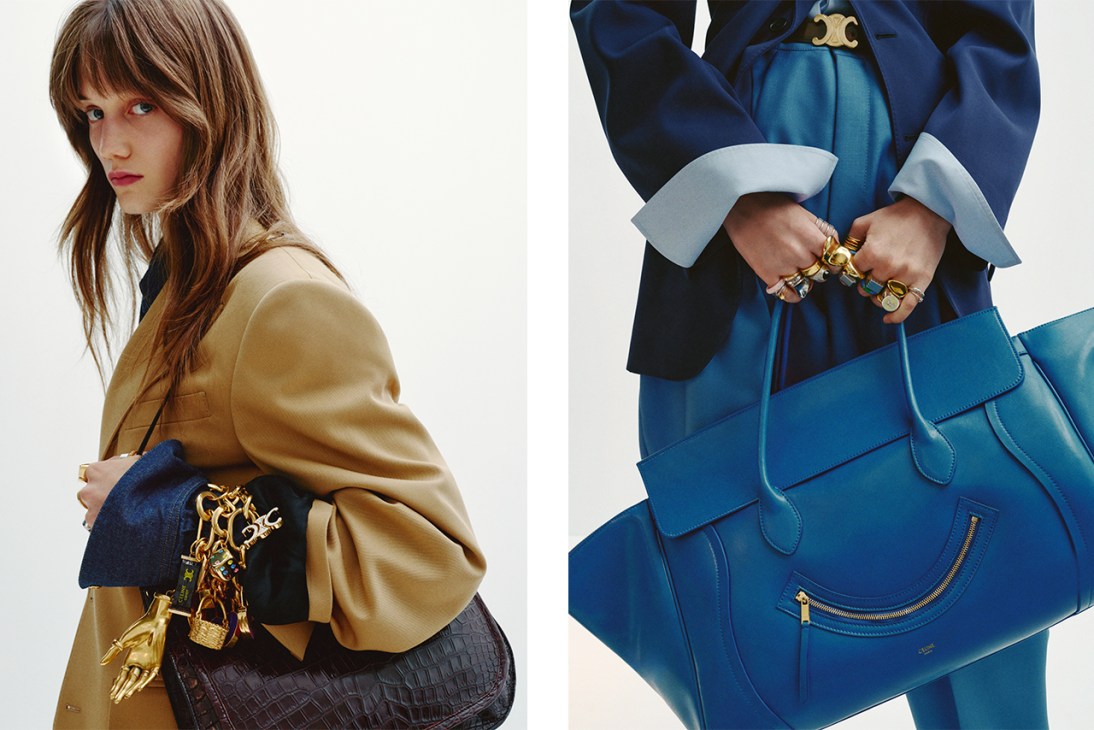
This was a world-class case study in the art of the rebrand. Rider didn’t try to erase the past, alter the logo or impose radical changes from day one. Instead, he paid homage to the house’s heritage (founder Céline Vipiana’s flair for “couture sportswear” was reflected in his designs and so were signature styles of his predecessors Phoebe Philo and Hedi Slimane) and focused on delivering great-looking clothing. They’re pieces that become part of the wearer’s life, that speak of the past, the present, of fantasy and of life itself, to use his own words.
Indeed, this was a collection that sparked a desire to shop. Perfect dress coats, sharp tailoring and an array of playful accessories were on display as the cast made its way through Vivienne, a 17th-century hôtel particulier and Celine’s current HQ. “Celine stands for quality, timelessness and style – ideals that are difficult to grasp and even harder to hold on to,” says Rider. “We worked on translating them into both a way of dressing and an attitude.”
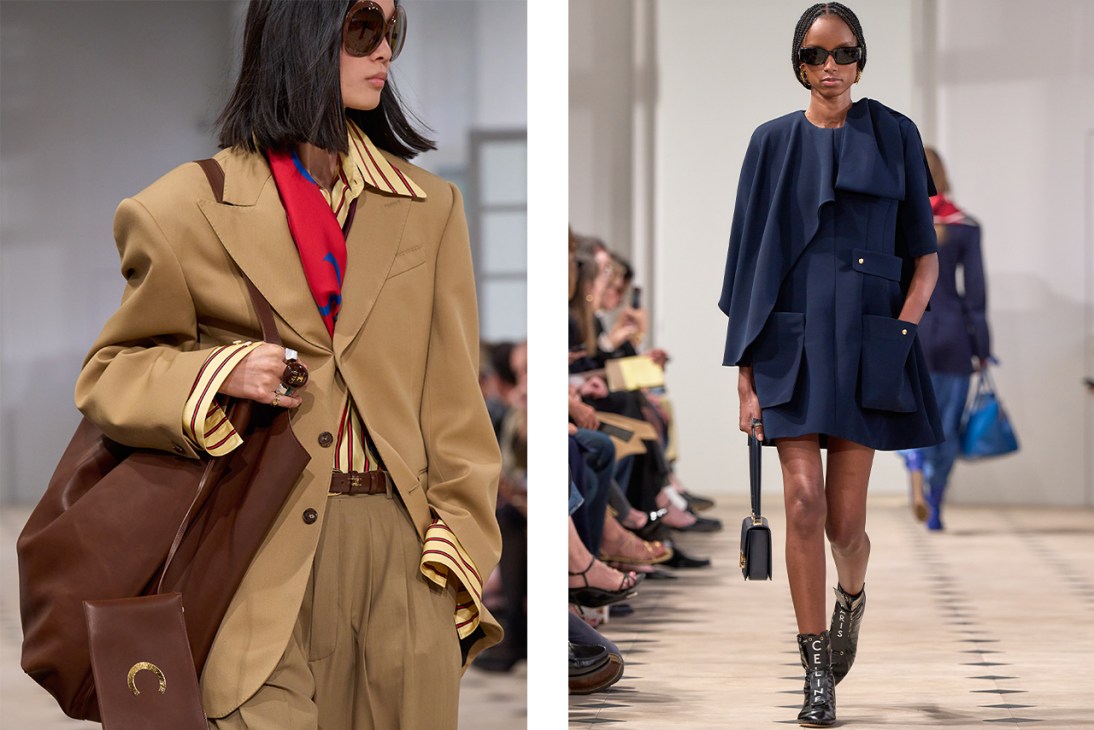
This inherently modern mindset extended into the execution of the show itself – an intimate affair, free of gimmicks and pretence. Fresh flowers and a paper invite wrapped in a discreet, black-and-white silk scarf were delivered to guests before the presentation. At the runway, the crowd was there to see rather than to be seen. Even the rain showers didn’t dampen the mood – guests kept smiling under chic Celine-branded umbrellas.
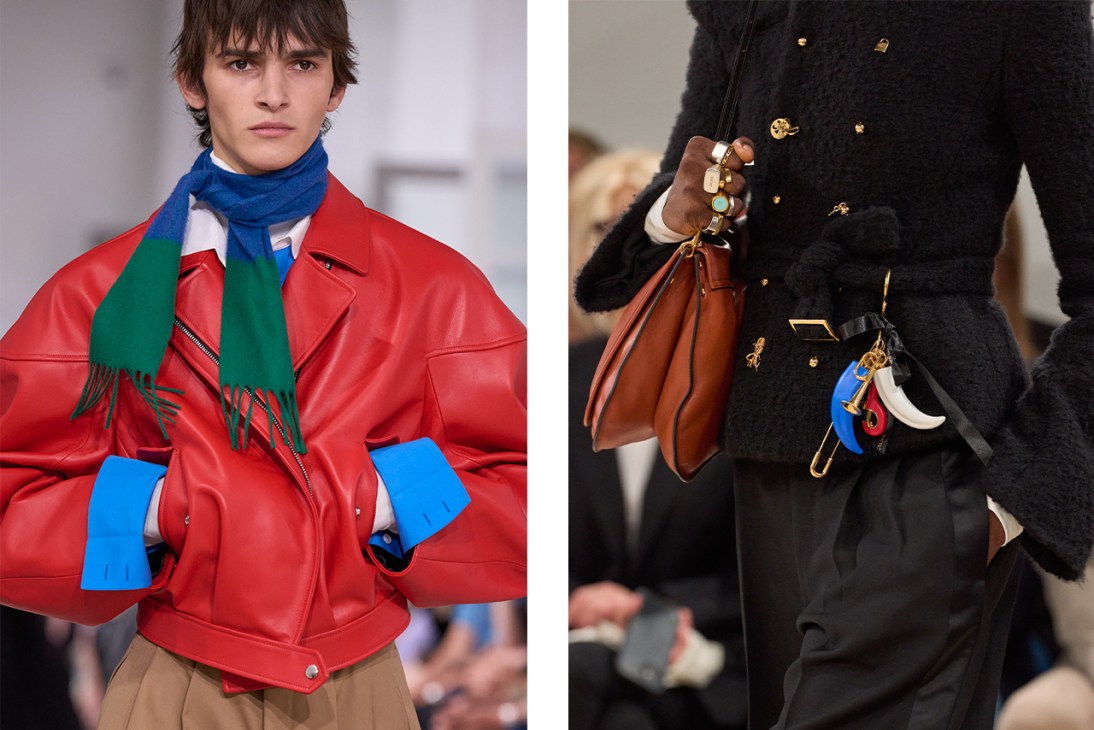
For the luxury-fashion industry, the first half of the year was mired with speculation – amusing at first, exhausting soon after – about musical chairs inside C-suites and design studios of brands in Milan and Paris. Now, with a new set of creative directors installed in these sought-after positions, attention has been redirected towards their high-stakes runway debuts. In the coming months, about a dozen houses will present fresh visions under renewed creative leadership. Brand owners and CEOs will be sitting on the edge of their front-row seats, waiting to see whether they made the right hiring choices and whether their balance sheets stand a chance at recovery.
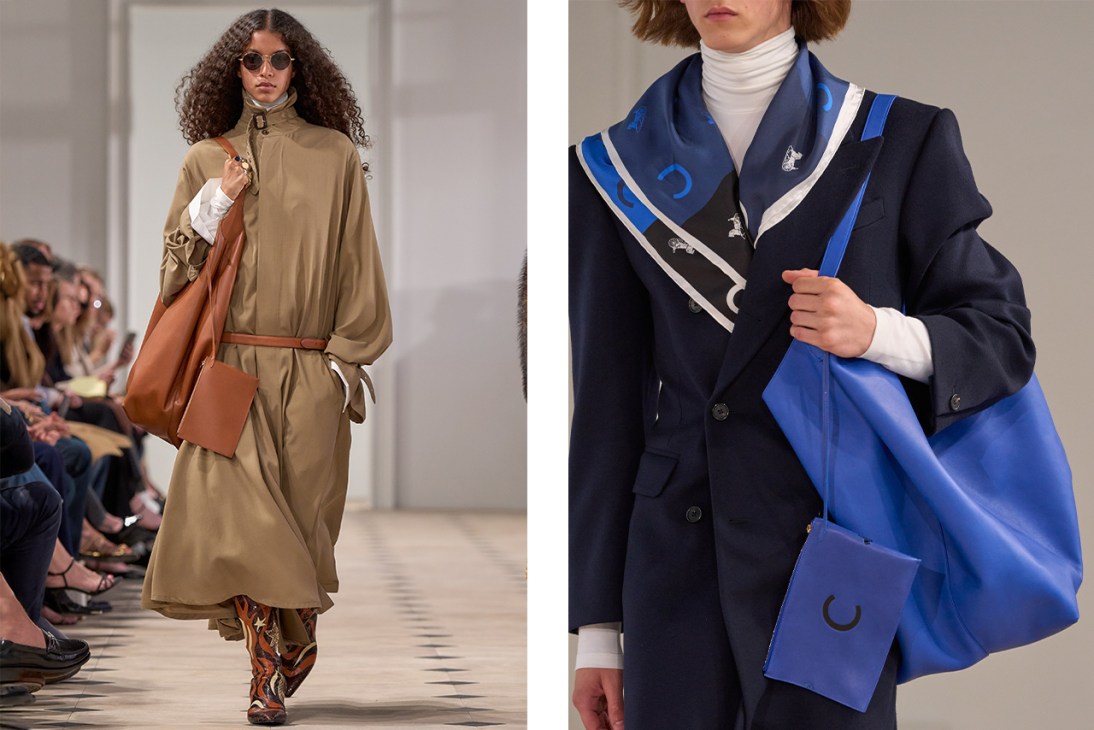
In the case of LVMH-owned Celine, CEO Séverine Merle and group CEO Bernard Arnault no longer have anything to worry about. American-born Rider isn’t new to the French house: he spent a decade working under Phoebe Philo before moving to Polo Ralph Lauren, where he helped to reignite excitement for the label.
In this new position, which he described as a homecoming and a “complete joy”, Rider has been thrust further into the spotlight. He finally has a chance to get the credit that he deserves and to make a bigger impact on the industry at large. A star is born.
For the first time in more than a century, Parisians have been allowed to swim in the Seine. Three outdoor bathing areas opened to the public this weekend amid a searing heatwave, though authorities had to temporarily close them in response to a heavy downpour as Paris’s 19th-century sewage system has a habit of overflowing. Nevertheless, residents turned out in force for their opening on Saturday, with many expressing delight at the opportunity to cool off, despite long queues. As the Seine is one of Europe’s busiest waterways, every swimmer had to be tethered to an unsightly inflatable yellow lifebuoy. Le Parisien is already asking whether the rubber-ducky hue of the ugly personal floats will be the colour of the summer.
The reopening of the Seine to the public for the first time since the 1920s is a triumph for the city’s mayor, Anne Hidalgo. She spearheaded the creation of these free-to-access swimming spots, which were promised ahead of the 2024 Paris Olympics. The initiative is part of the Paris Plages project, which was launched in 2002 by the then-mayor, Bertrand Delanoë, who sought to turn once-dull riverbanks into sandy beaches.
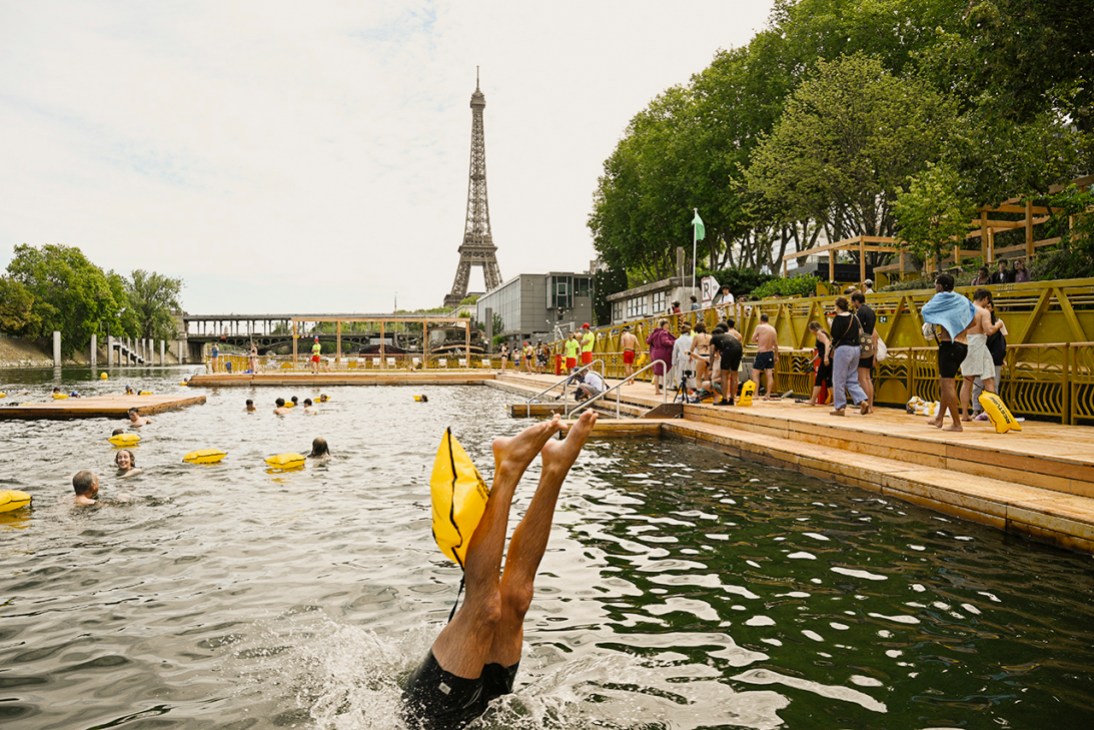
Some €1.4bn were spent on cleaning up the Seine, while millions more were lavished on constructing the swimming spots. The vision of a Paris that makes full use of its famous waterway is finally starting to take shape.
The move is Hidalgo’s most significant step towards recentring the French capital around its public spaces. It follows her extension of Paris’s cycle lanes and the permanent closure of Rue de Rivoli to most private vehicles. The expansion of her ambition to the Seine’s waters is not only highly symbolic but also smart public policy: this month’s intense heatwave has underlined how unprepared Paris is for extreme weather. The city’s historic buildings, with their lack of air conditioning, are ill-equipped for the summers to come. A swimmable Seine will go some way towards making future heatwaves easier to endure. But the project will only be successful if its current capacity of 600 swimmers across three sites is increased and the city finds a way to keep people swimming throughout the summer.
Hidalgo has been criticised for some of her costlier efforts to remake Paris, which might have scuppered her one-time presidential ambitions. But a swimmable Seine is a big achievement for the capital, which has changed more during her stewardship than under any of her recent predecessors. Dive in and see for yourself: Paris has finally joined the ranks of great cities where it makes sense to keep some swimwear and a towel to hand as you explore. Just make sure that your trunks don’t clash with yellow.
Bouvier is Monocle’s Paris bureau chief. For more on city swimming and improving urban waterways, listen to our report from the Swimmable Cities Conference in Rotterdam.
Tróia, a coastal peninsula just south of Lisbon, is little more than a 15km sliver of sand. Here, pristine dunes form a barrier between the Atlantic and the estuary of the river Sado, with villa after villa of the well-heeled Alfacinhas (Lisbon locals) lining the coast. Holidaymakers can choose to spend their day on an uninterrupted golden beach where the waves crash in from the ocean or jump across to more secluded waters, where a pod of bottlenose dolphins also swim.
As a project site for a Lisbon-based architect, it doesn’t get much better than Tróia. It is exactly what landed on the desk of Inês Cortesão, founder of Bica Arquitectos. Lisbon financier Vasco Machado came to her with an oceanfront plot in the middle of the peninsula – one of the last available – and an almost carte-blanche design brief for a holiday home to host family and friends. “Everyone’s dream place to live is in a house by the sea,” says Cortesão. “It’s a dream to design one too.”
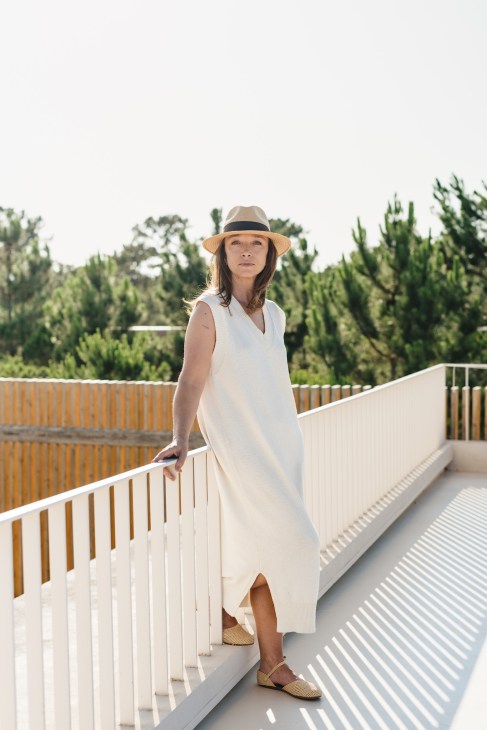
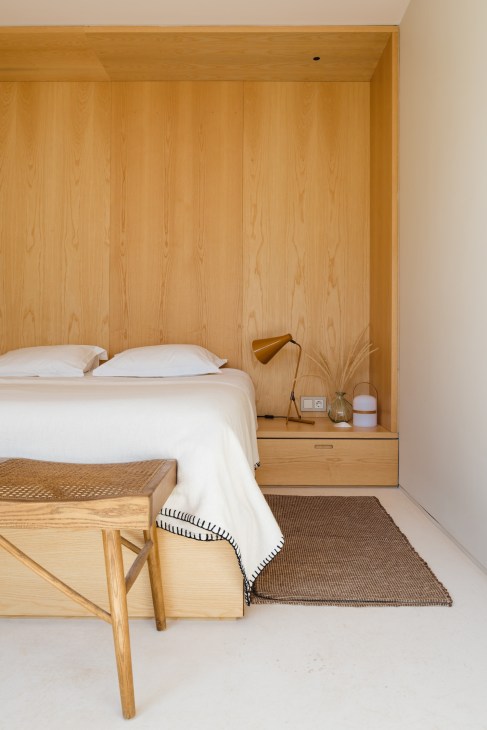
The commission wasn’t all carefree: the land is inside a gated community, with a close neighbour on one side and a communal pathway to the beach on the other. The project needed to provide plenty of privacy while being sensitive to its built and natural surroundings. But Cortesão, who shows Monocle around on a sunny summer Saturday (while friends are visiting for a swim and some holiday sun), didn’t have to think long about the concept. “I’m not the kind of architect to make drawing after drawing,” she says. “The location is so strong that knowing what to do was intuitive.”
For the architect, the only solution for building on the dunes was to mimic them. On entry, the home reveals itself immediately: there is a long corridor that opens to a combined living room, kitchen and pool area, while six bedrooms are spaced out symmetrically on each side. The key architectural element is a four-metre-high wall of fir planks that wraps around the building’s exterior, directly inspired by the wooden palisades typically built on dunes to keep the sand in place and to demarcate property.
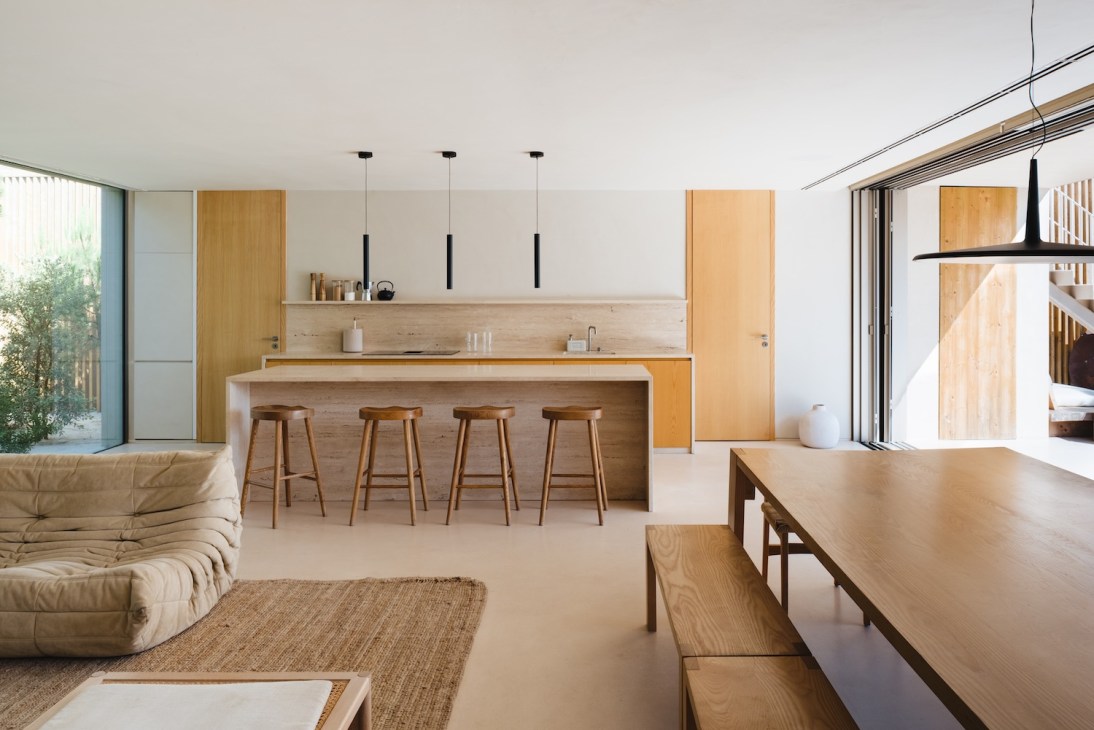
Playing a key role in the building’s design is the surrounding landscape. Together with landscape architect Mariana Mendes, Cortesão created a buffer of sand around the pool so that sunbathers aren’t visible from neighbouring properties. All around the building, Cortesão planted stone pines, marram grass and flowering shrubs that are native to the dunes. The interiors also continue the sandy theme, with grainy plaster floors, heavy travertine kitchen surfaces and custom-made fixtures in honey-hued ash. Cortesão herself is dressed like an extension of the house in a cream knitted dress and rattan sandals. “I can’t separate architecture and design in my work,” she says. “It’s all one; there has to be harmony.”
This holistic, no-nonsense approach is why Machado tasked Cortesão, who had previously designed his apartment in Lisbon, with the project. “She’s not only an architect but she knows how to do everything,” he says. During the construction process, Cortesão, who has completed more than half a dozen standalone villas, was at the building site every week, fussing over details and keeping an eye on the builders. “With someone like Inês, you know it’s going to work out,” adds Machado. “She’s really picky.”
Machado grew up spending his summers in the nearby village but he currently lives in Spain. He stays in Tróia in both summer and winter together with his wife and four children. “Even at night the kids walk freely in and out,” he says. “It’s total liberty. The door is always open.” Unsurprisingly, his favourite part of the house is the pool, which Cortesão designed to slope down like the seashore and coated with a mortar mixed with sand from the area. “It was Inês’s idea to make the pool resemble the beach,” he says.

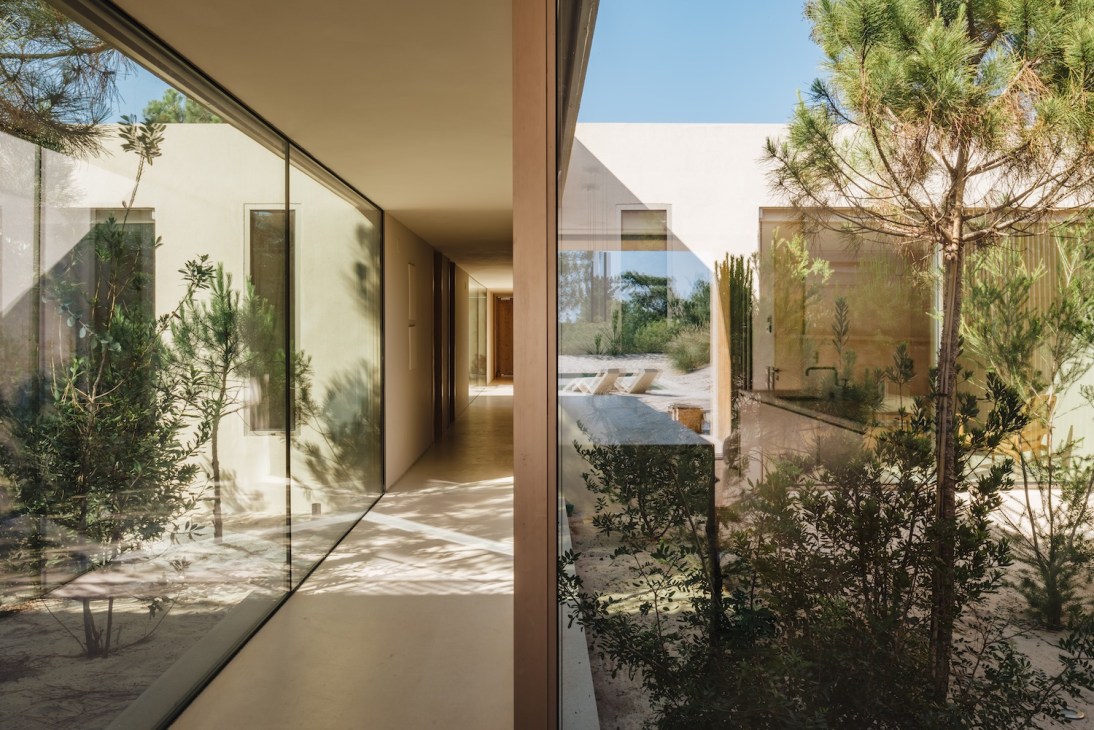
Cortesão’s only qualm about the house relates to the pool area, where there once stood a scraggly, sculptural pine tree. The architect had gone to great lengths to preserve it and oriented the entire house around it. “That pine was the protagonist of the central corridor,” she says. Suddenly, just three months before construction completed, the needles turned yellow. In its place is now a smaller, straighter specimen that acts as the home’s focal point. But Machado is giving the young pine, like the house, time to grow into its own. “I’ll only consider this project done when the house appears like being inside a forest,” he says.
Slackers are in the news, which is never good news for a slacker – not least because someone might ask you to write about it. So, in the interests of educating the indolent, here’s our slacker’s manifesto – the result of many years of gestation and half an hour of rushed scribbling before the final deadline…

1.
You should have a preternatural ability for working out what the bare minimum effort is for every task/job/relationship.
Stick unerringly to it. Less gifted slackers need not, however, despair – the bare minimum can be arrived at using this simple formula: result intended ÷ time you have to do it × how much you give a damn.
2.
Be economical with information.
For instance, always give your interlocutor, especially if they are responsible for assigning you work, the bare minimum (there is an exception for excuses). In this way, every deadline becomes a moveable feast. One of those feasts during which people fast.
3.
Hide in plain sight
The Irish poet Patrick Kavanagh (at least I think it was him – I can’t be bothered to check), once wrote that if you get a reputation for being an early riser, you never need to wake up before midday. Make very public but very noncommittal shows of accepting work and you will never need to actually do any.
4.
Buy a thesaurus.
You need to get handy with the synonyms so as to construct several different responses for those attempting to make work for you. Disclaimer: you can only say “It’s fine” exactly 13 times before you have to do something about it.
5.
Find a workaholic and attach yourself to them.
Workaholics love to work and there’s nothing wrong with feeding their addiction. Pass on all of the tasks that you can, they’ll thank you for it. I think.
6.
Painstakingly ring-fence your role.
Once you have made it very clear what is within (not a lot) and without (most everything) your remit, then you can work at tightening that net.
7.
Find out which area of the office has the worst wi-fi signal.
Make that your zone. If nobody reads an email, was it even sent in the first place?
8.
Become a pro-crastinator.
Sort your phone apps by logo colour. Learn more about the Seven Years’ War. Get really good at online billiards. Circumnavigate the Balkans, on Google Streetview.
9.
Collaborate to vegetate.
Find a fellow slacker in your organisation and learn to prevaricate and, if needs be, lie for one another. One essential thing to remember is that you must never acknowledge the dark arts that you are both practising – this might break the spell.
10.
I couldn’t think of anything for number 10.
Slackers of the world, unite! Tomorrow.
When exactly is it okay to cry in public? And who gets to do it? It’s a question I’ve been pondering since last week when the UK’s chancellor of the exchequer, Rachel Reeves, shed a tear in the House of Commons and caught the world’s attention while she was at it. Whether you put her watery eyes down to the official version of events (a personal matter) or the fact that her job was on the edge of a precipice following a disastrous Labour Party about-turn over welfare reform, the media made it clear almost immediately that she was one person not permitted to blub in the spotlight.
Reeves’ show of emotion was picked up by outlets around the world. In the US, CNBC reported that the UK was “in dire straits after minister’s tears rattle markets”. In Italy, meanwhile, La Repubblica made a clip of the finance minister in its “video of the day”, accompanied by the explainer: “Minister cries in parliament over budget law: tears sink sterling and bonds.” Italy has form when it comes to politicians crying in public. Back in 2011, former welfare minister Elsa Fornero was trying to prepare the Italian public for the austerity measures that the technocratic government of Mario Monti was about to unfurl, when she was caught by TV cameras being unable to finish pronouncing the word “sacrifice” as she wiped a tear from her eye.
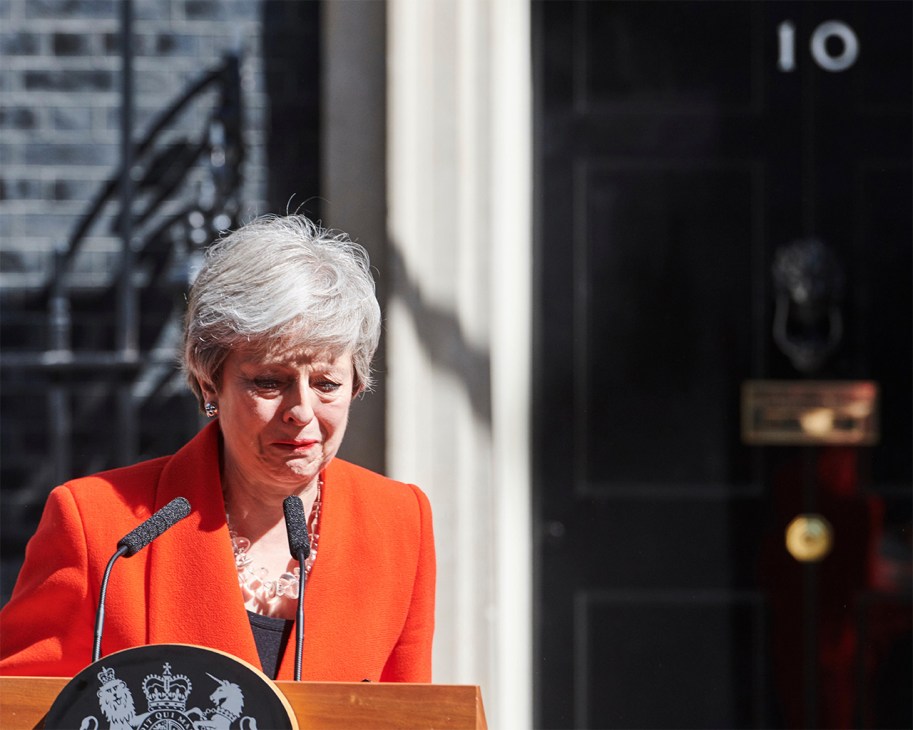
Reeves isn’t the first British politician to cry. Theresa May – famously derided for being robotic and lacking emotion – broke down outside 10 Downing Street after announcing her resignation in 2019. But instead of suddenly being celebrated for showing another side to her character, she invited scorn for all the times that she had failed to show empathy during her tenure.
Who, then, is allowed to cry in public? Well, if it happens to a sports star, it’s deemed endearing. Think former British runner Paula Radcliffe at the 2004 Olympics in Athens after dropping out of a race or Argentine footballer Maradona, who seemed to open the waterworks at any given opportunity. Public mea culpas from Japanese businessmen also seem to wash well with the public there, notably Toyota’s then-president Akio Toyoda when giving a tearful apology back in 2010.
Politicians have no such carte blanche. We expect them to be Teflon Men and Iron Ladies – and with some reason – while also deriding them if they appear too wooden. In many ways they hold both the stability of a nation and its public image in their hands, meaning a public wobble can lead to an ever greater financial one.
Reeves hasn’t brought the UK to its knees – and markets have stabilised. Could and should Labour have handled the situation better? Certainly. But while many look at the incident through a prism of poor organisation and even a lack of professionalism, I prefer to see it another way. In an age in which politicians often seem out of touch and are schooled by aides to do anything but answer a question directly, Reeves’ tears were proof that politicians are fallible and human. Sometimes – only sometimes – they could benefit from our sympathy rather than our scorn. It feels good to be reminded of that fact.
Stocker is Monocle’s Europe editor at large, based in Milan. For more on the UK’s Labour government, see its effort to get the “special relationship” back on track.
What a difference six days and 6,000 kilometres makes, especially in the business of selling newspapers. On Saturday morning, I woke up at my mom’s place in the Old Mill district of Toronto and plotted a course to the nearest good cup of coffee. While I’ve sampled a few places in The Kingsway and Bloor West Village, the best flat white is found at the Organic Press Café on the corner of Annette Street and Willard Avenue. There’s usually a cyclist or two enjoying a hit of espresso before setting out on their circuit and a couple out for a stroll with their pooch. Coffee in hand, I keep heading east and then cut down toward Bloor Street and the local Circle K convenience shop. No, I’m not in search of a five-litre beverage or a pack of John Player Lights but the weekend papers.
Picking up a copy of the Toronto Star or The New York Times used to be a rather simple exercise in this stretch of the city but some of the classic, family-owned-and-operated convenience stores have closed down; Book City no longer deals in dailies or even weekend editions so Circle K is the only option. Just inside the front door, to the right, you can find the Toronto Star, WSJ, The Globe and Mail, National Post, The New York Times, The Toronto Sun and FT Weekend. It’s not exactly an outlet that celebrates the beauty of the printed word but as the only game in mom’s part of town it’s a bit of an oasis – most people popping in around 07.30 aren’t after five-litre beverages either, just their favourite trusted source. It also gives a sense of where the sector has ended up. You can commit to a subscription delivered to your door or venture farther afield to get some ink on your fingers.
A week earlier on a grand boulevard in the heart of San Sebastián, at roughly the same time of day, the needs were similar but the retail experience rather different. Open to the street and bursting with periodicals and newspapers from across Spain and Europe, it’s one of the finer examples of class news trading that you’ll find anywhere in the world. It’s the kind of place that still has seven editions of Vogue (not that it matters these days as you largely get the same stories whether it’s the Deutsch or French edition), the lovely Manera, all spin-offs of ¡Hola!, Le Monde diplomatique and a very good special niche – you can buy the previous month’s editions of all your favourite weekend newspaper supplements just in case you missed them. Very clever.
Behind the counter, the man in charge of the Saturday morning shift knows all of his customers and is doing one thing and doing it very well. There is no wall of vaping products or a Chupa Chups takeover, just the mags and papers that you might want to enjoy with your coffee, take to the beach or save for a quiet moment on Sunday evening. It pains me to say this but it’s an experience to enjoy while you can. There’s a good chance that you already live in a ‘news desert’ (a real industry term for people who have no access to a newsstand or even a Circle K that stocks a few papers) and they’re only expanding.
During a transit through Abu Dhabi airport a few weeks ago, I wanted to check on the news offer at WHSmith and was alarmed to find that this particular brand had completely exited the print-news business. There was one slim, point-of-sale stand with some titles from a local publisher – but that was it – no Der Spiegel, no The New Yorker, no Monocle. “What exactly were they selling?” you ask. The usual mix of plush toys, device chargers, canned beverages and general Abu-D merch. If you believe in the power of print and feel that it has a place in the media landscape, then take this as a call to action to make sure that you support your remaining kiosks (see our round-up of favourites around the world here). And if you reside in a parched corner of the world for printed-word news then please subscribe to Monocle (becoming part of our global club also helps to finance this gratis newsletter) or whatever title that you feel is missing from your line-up.
Now off you go, get out there and give your newsagent a little cuddle, pay a visit to your nearby Monocle Shop to grab the latest Konfekt or simply sit back and join from here. Happy week ahead.
To support Monocle’s independent journalism, subscribe today. Alternatively, you can pick up a copy of our bumper July/August issue and the ‘Monocle Mediterraneo’ newspaper online or at your closest remaining newsstand.
When Chris Green opened the doors to Ven Space in Brooklyn’s Carroll Gardens, he knew exactly what kind of business he wanted to create: an intimate neighbourhood shop with a steadfast loyalty to the traditional bricks-and-mortar experience. The multibrand menswear boutique, which stocks a thoughtfully selected range of luxury clothing, shoes and accessories, does not offer any online shopping options – if you want access to its meticulous curation, you have to come in.
Green is on the floor every day. “Retail has gotten away from the idea of the shopkeeper,” he says. Ven Space (ven means “friend” in Danish) is open to the public from Wednesday to Sunday, while Mondays and Tuesdays are dedicated to private appointments.
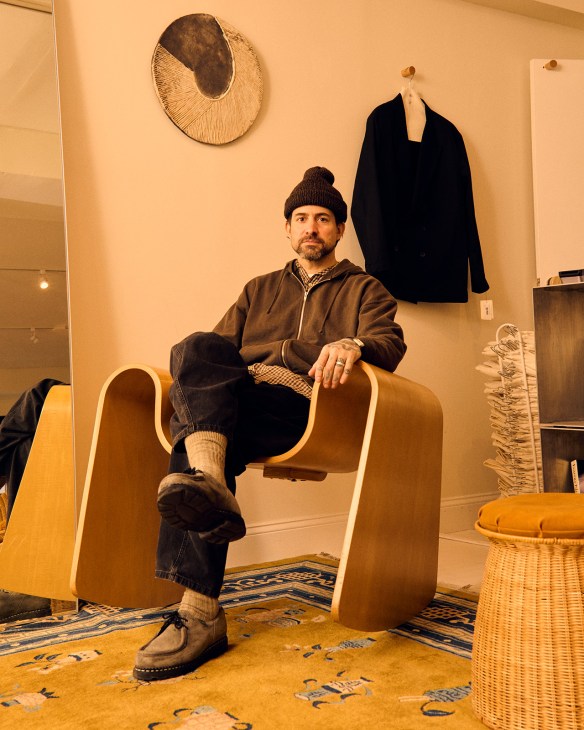
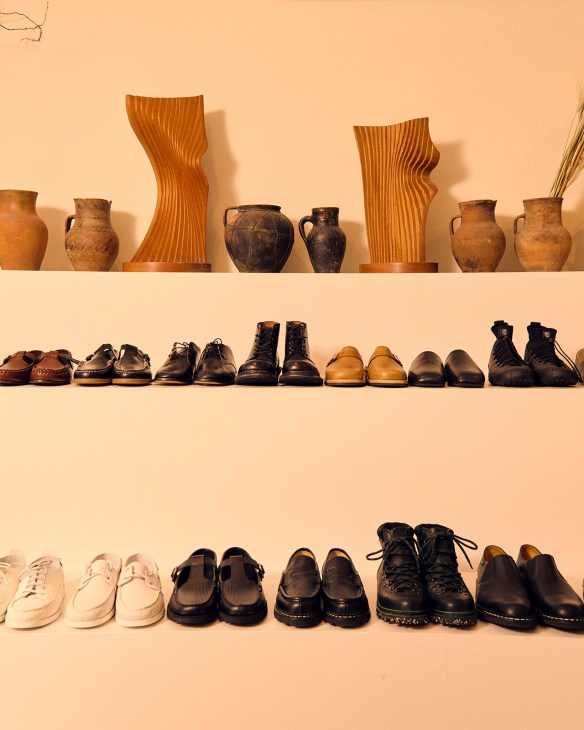

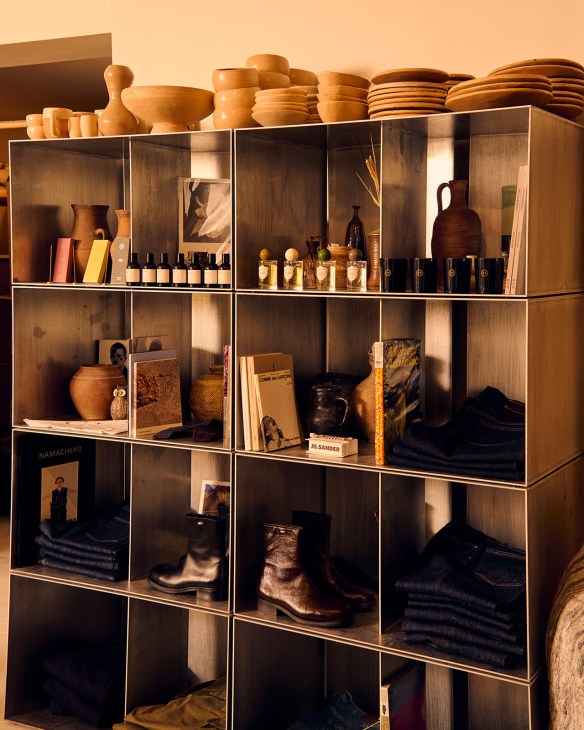
On the shop floor, you’ll find a mix of brands including Japan-based Auralee and Dutch label Camiel Fortgens. T-shirts from Our Legacy sit beside Dries Van Noten button-downs and even the shapely handcrafted ceramics dotted around the boutique are for sale. Green, who is a longtime resident of the leafy enclave that is Carroll Gardens, handpicks every item, guided by his personal taste rather than seasonal trends. “I don’t want to be everything for everybody, and I don’t think anybody can be – if you do, you lose the strength of your idea and your point of view,” he says. “So I started by thinking about what I would actually want to wear.”
His commitment has paid off. Despite opening just nine months ago, Ven Space has already gained a devoted following, with regular customers popping in to snag new launches. “We pride ourselves on getting to know the people coming through the door,” says Green.
ven.space.com
Your next read is just a click away. Best boutiques in the world: Neighbour, Vancouver
In a world of rising skylines, shrinking public spaces and a growing demand for greening our cities, the “sky garden” has emerged as a transformative idea. These elevated pockets of foliage can offer a moment of calm above the hustle and bustle of the city, making urban life feel more generous and breathable. In private developments in particular, these gardens act as an aerial oasis: they help cool down the building, boost biodiversity and create a space for residents to wind down with a view. In Singapore, for instance, the decision to mandate vertical greenery in many districts is a big reason why the city-state feels liveable even at 35C. Milan’s Bosco Verticale shows how integrating plant life into residential buildings can help redefine a city’s commitment to sustainability. While in Seoul, it was through the development of a linear garden that a disused motorway was transformed – connecting neighbourhoods, increasing walkability and reducing the urban heat-island effect.

But what happens when we start blurring the line between public and private, and replace public parks with sky gardens? Current global planning demands mean that every new development is expected to deliver sustainability and biodiversity, leaning into the concept of community wellbeing and green intent. It’s fitting, then, that rooftop or high-rise forests come in as an easy solution – but despite everyone’s best attempts, it will be difficult for them to replicate the ecological and social functions of ground-level urban vegetation.
Don’t get me wrong, there’s much to be enjoyed about a sky garden. They are an elegant expression of vertical living and a welcome antidote to the concrete and steel of the city. In London, it was recently proposed that a new tower with such a space be erected on Fenchurch Street – meaning that, if the project is approved, Londoners will have four skyscraper gardens within the same city block. While there is merit in the concept, it’s important not to take these spaces as a tit-for-tat replacement of the real thing.
One of the most defining characteristics of parks is that they are free and open to all. A sky garden, in theory, employs that same concept – simply a few floors up. But once you add in the security requirements for each tower and the need to track visitor statistics, it usually means that you have to pre-book a free time slot. This often involves factoring in time to stand in a queue, along with bag-size restrictions that would make bringing a picnic impossible. Does that sound like a day out in a park?
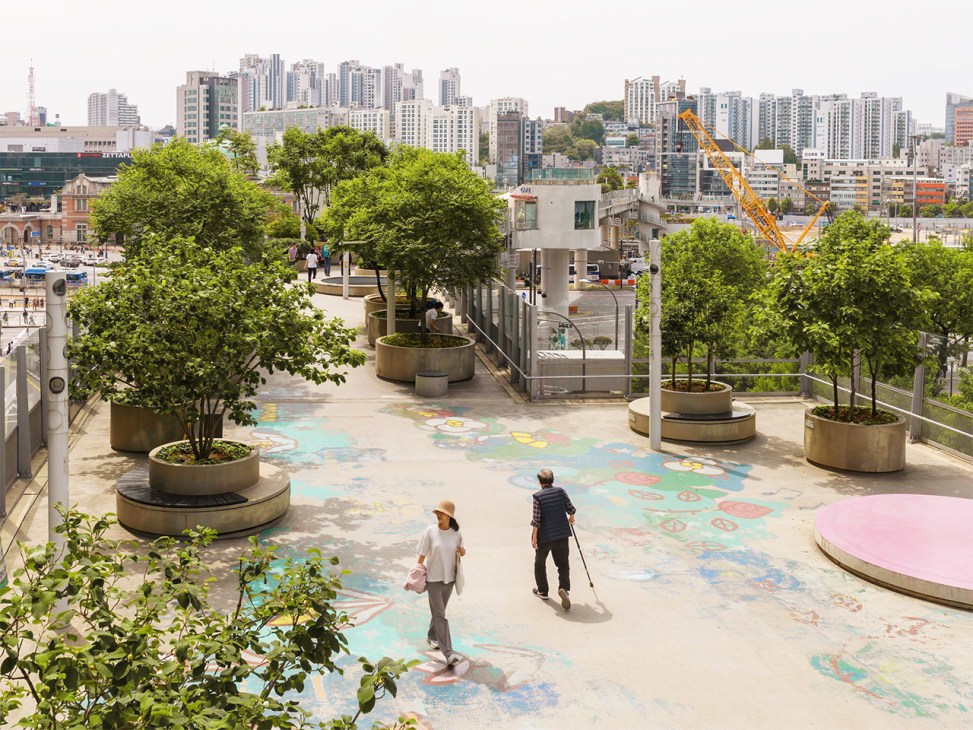
The best way to describe it would be a controlled-park experience, where you’re merely dipping a toe in nature, provided you adhere to the rules that “allow” you to be there in the first place. A real garden offers unplanned time. It’s a place to aimlessly wander, to lie on the grass and drift off or to meet with friends, pop open a bottle of prosecco and catch up on life. It’s a place to arrive with nothing and leave sun-kissed. It shouldn’t require a wristband, a café receipt or a justification.
The topic of high-rise green spaces touches upon a broader trend in our cities, which is the loss of spontaneity. Perhaps we were always headed this way but the pandemic exacerbated our need to plan everything. Now we must always reserve a table before heading to a restaurant, museums ask for you to secure a visiting slot on their website and a garden only allows you in if you agree to its terms and conditions.
The news of a fourth potential sky garden in London is not, per se, a bad thing. But it should be seen for what it truly is: an enhancement to private development that the general public is allowed to visit, rather than a substitute for a civic space. They offer relief, not freedom. Real gardens are open, democratic and belong to everyone – regardless if you stumbled upon them or had a visit planned all along.
The dog is 13. She celebrated her birthday on Friday by going to the vet to get her doggy travel documents. Then, in just a week’s time, she will join us on the drive from London to Mallorca. It’s a reminder that almost a year has passed since we noticed that something was up, took her to our vet in Palma and discovered that she had cancer. There were several tumours in her spleen, another in her shoulder. Back in London we were given a sobering assessment – let her alone and say goodbye within eight weeks or operate. We took route two but were warned that she would probably have a lame leg once a chunk of the shoulder around the tumour was removed. And still, we might only get a few more months. But here we are – the most recent scans showed no signs of cancer but the oncologist says that it will return one day. Even so.
I never had a dog as child but in adult life I have shared my home first with my partner’s border-collie mongrel mashup (adorable, clever), then a weimaraner (adorable, properly stupid) and now Macy the fox terrier (adorable, wily and very particular). They have all been good at training humans, good at getting you to see things from their perspective. But also skilled at passing on some life lessons along the way. Macy in particular.

When she finally came home after the surgery, Macy was shaved, her wounds stapled together and she was in pain. It would be days before she could even stand. But she has shown a fortitude that I wonder whether I could muster. She learned how to walk anew, favouring her stronger front leg, soon finding how to run and jump again. She showed no signs of being sad – just a look of surprise when, in the early days, that weak leg might buckle. I know that I can be too quick to judge something as viable or not, too easily annoyed when the pursuit of perfection ends with a compromise – but she has shown me that sometimes we just have to accept that things are a little different now, start over, find workarounds.
In the past year she has also revealed a gritty self-assurance, a determination to do things her way when it matters. Aware that strangers might knock her bad shoulder, she now lets out a funny squeak if their stroking seems to be getting too forceful.
During the sweltering heat that hit London this week, she took herself to the roof terrace and slept there on her back, the breeze cooling her belly. I went to check up on her at 03.00, thinking of bringing her back to bed but instead I just watched her dreaming, legs twitching. Content to be alone.
It’s been a big week – a party for the launch of our Quality of Life Survey, our board meeting in Zürich, a quick dash to Spain. But when I’ve opened the door of my house, there has been a dog who squeals with delight at seeing me, runs around in circles in celebration and within minutes is curled up on the sofa, emitting sighs of joy. She knows to live for now, to make the most of every second. Perhaps she should write a self-help book. I definitely need a copy.



